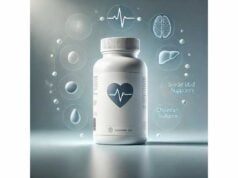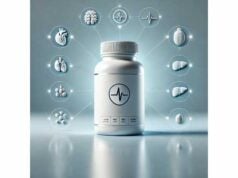
Isoniazid (often shortened to INH) is a cornerstone antibiotic for treating tuberculosis (TB). Discovered in the 1950s and still essential today, it targets the bacterial cell wall in Mycobacterium tuberculosis, helping cure active TB when combined with other first-line drugs and preventing latent TB infection from progressing to disease. Isoniazid is effective, widely available, and inexpensive, but it must be used correctly to prevent liver injury, drug interactions, and antimicrobial resistance. In this guide, you’ll learn exactly what isoniazid does, how it works, when it’s prescribed, and how dosing differs for active disease versus latent infection. We’ll also cover pyridoxine (vitamin B6) co-administration, interactions with common medications, and which symptoms mean you should contact your care team immediately. The aim is practical clarity: the right regimen, the right monitoring, and safer use.
Key Insights
- Proven first-line TB drug that blocks mycolic-acid synthesis, used for active disease (in combination) and latent TB infection.
- Main serious risk is hepatitis; monitor symptoms and liver tests as advised, avoid alcohol.
- Typical adult dosing: 5 mg/kg once daily (max 300 mg) for daily regimens; 10–15 mg/kg (max 900 mg) for intermittent DOT; children 10–20 mg/kg (max 300 mg).
- Avoid or use specialist guidance if you have acute hepatitis or severe liver disease, heavy alcohol use, or major drug interactions; supplement vitamin B6 when at neuropathy risk.
Table of Contents
- What is isoniazid and how it works
- Where it helps and when it doesn’t
- How to take isoniazid and dosing
- Drug–food interactions and variables
- Common mistakes, monitoring, and troubleshooting
- Safety, side effects, and who should avoid
- Evidence and guideline snapshot
What is isoniazid and how it works
Isoniazid is a bactericidal agent specific to the Mycobacterium tuberculosis complex. It is a prodrug that requires activation by KatG, a catalase–peroxidase enzyme inside the bacterium. Once activated, reactive intermediates form a complex with NAD that inhibits InhA, an enoyl-ACP reductase needed for synthesizing mycolic acids. Mycolic acids are long-chain fatty acids that build the waxy cell wall of mycobacteria; blocking their production weakens the wall, leading to rapid bacterial killing in metabolically active organisms and suppression in slowly replicating populations.
Key pharmacology points:
- Spectrum: Strong activity against M. tuberculosis; little to no effect on most other bacteria.
- Resistance: Often driven by mutations in katG (impaired activation) or inhA promoter/structural genes (target modification). This is why isoniazid is usually combined with other TB drugs for active disease.
- Absorption and distribution: Rapid oral absorption with good tissue penetration, including caseous lesions and the central nervous system (useful in TB meningitis as part of combination therapy).
- Metabolism: Primarily acetylated in the liver by N-acetyltransferase 2 (NAT2). People inherit “fast” or “slow” acetylator status. Slow acetylators have higher drug exposure and may be at increased risk of certain adverse effects; fast acetylators may have lower exposure but standard dosing remains effective for most.
Bottom line: isoniazid disables a core part of the TB bacillus’ cell-wall machinery. Its targeted mechanism explains both its power against TB and the need to pair it with other agents to prevent resistance.
Where it helps and when it doesn’t
Active, drug-susceptible TB (pulmonary and extrapulmonary). Isoniazid is a standard component of first-line combination therapy. In classic six-month regimens, it is paired with rifampin (or rifapentine in specific regimens), pyrazinamide, and ethambutol in an initial phase, followed by a continuation phase that typically includes isoniazid plus rifampin. Certain four-month options now exist in specific settings; the unifying theme is that isoniazid stays central when the strain is susceptible.
Latent TB infection (LTBI). For people with a positive test and no signs of disease, isoniazid can prevent progression to active TB. Modern practice often prefers shorter rifamycin-based regimens (e.g., 3HP or 4R) because they’re easier to complete, but daily isoniazid for six or nine months remains an effective alternative, particularly when rifamycins are contraindicated or interact with critical medications.
Special sites of disease. Because of its penetration into the CNS, isoniazid remains valuable in TB meningitis as part of multi-drug therapy. It also reaches high levels in caseous material within cavities, contributing to sterilizing activity alongside companion drugs.
When isoniazid is not enough. Monotherapy is unsafe for active TB: it selects resistance and fails to cure. If a strain is known or suspected to be isoniazid-resistant, guidelines direct clinicians to regimens that avoid or replace isoniazid and restructure the drug combination and duration accordingly.
Real-world “benefit” defined. For active TB, the benefit is cure and interruption of transmission. For LTBI, the benefit is preventing reactivation—especially important for people with recent exposure, fibrotic lesions on imaging, or immune suppression.
Limits to expectations. Isoniazid is not a general antibiotic for routine infections. It does nothing for viruses and is inappropriate for non-TB bacterial illnesses. Since it can strain the liver and interact with many drugs, it should be used only when TB is confirmed or there’s a clear indication for preventive therapy.
How to take isoniazid and dosing
Adults (typical dosing):
- Daily dosing for active TB or LTBI: 5 mg/kg once daily, up to a maximum of 300 mg/day.
- Intermittent dosing (e.g., twice weekly under directly observed therapy): 10–15 mg/kg, up to a maximum of 900 mg per dose. Intermittent regimens should use directly observed therapy (DOT).
- Timing: Take on an empty stomach (1 hour before or 2 hours after meals) for best absorption. If stomach upset occurs, your clinician may allow taking it with a small snack.
Children:
- Daily dosing: 10–20 mg/kg once daily (maximum 300 mg/day).
- Intermittent dosing: 20–40 mg/kg (maximum 900 mg per dose) when DOT is in place and the regimen calls for it.
Latent TB infection regimens using isoniazid:
- 6H: Daily isoniazid for 6 months (adults usually 300 mg/day; children weight-based as above).
- 9H: Daily isoniazid for 9 months (same dosing).
- Alternatives that do not rely on isoniazid alone (e.g., 3HP weekly isoniazid plus rifapentine for 12 weeks; 4R daily rifampin for 4 months) may be preferred for completion and safety in many patients; your clinician will guide the choice.
Combination therapy for active TB:
- Isoniazid is combined with rifampin (or rifapentine in specific 4-month regimens), pyrazinamide, and ethambutol in an intensive phase, typically 8 weeks, followed by a continuation phase. The exact regimen (4, 6, or 9 months total) depends on drug susceptibility, site of disease, patient factors, and national guidance.
Pyridoxine (vitamin B6) with isoniazid:
- Who needs it: People at risk for peripheral neuropathy—pregnant or postpartum persons, infants who are breastfeeding, individuals with HIV, diabetes, alcoholism, malnutrition, chronic kidney disease, advanced age, or pre-existing neuropathy.
- Typical dose: 25–50 mg/day of pyridoxine alongside isoniazid; if neuropathy develops, clinicians may increase pyridoxine to 100 mg/day while reassessing the TB regimen.
Missed doses and adherence:
- If you miss a daily dose, take it as soon as you remember that same day. If it’s nearly time for the next dose, skip the missed dose—do not double up.
- For DOT or structured regimens, communicate promptly with the clinic to keep the course on schedule. Adherence is critical to cure and to prevent resistance.
Practical tips:
- Avoid alcohol during therapy to lower liver risk.
- Keep a consistent time of day.
- Report symptoms of liver stress early: loss of appetite, nausea, vomiting, right-upper-abdominal pain, dark urine, or yellowing of eyes/skin.
Drug–food interactions and variables
Major drug interactions driven by enzyme inhibition. Isoniazid inhibits several cytochrome P450 enzymes—most notably CYP2C19 and CYP3A—and to a lesser extent others. As a result, it can increase blood levels and effects of medications such as phenytoin, carbamazepine, diazepam, triazolam, and warfarin. Clinicians often reduce doses of these drugs, check drug levels (where available), and monitor for toxicity (e.g., ataxia or nystagmus with phenytoin).
Rifamycins vs. isoniazid in combinations. Although rifampin induces drug-metabolizing enzymes (the opposite effect), combination therapy remains standard because the antibacterial benefits outweigh the PK complexity. Your team balances these effects and times other medicines accordingly.
Antacids and absorption. Aluminum-containing antacids can reduce isoniazid absorption. If you must take antacids, separate them by several hours.
Food interactions. Isoniazid has weak monoamine oxidase-inhibiting properties. Some people experience flushing, headaches, or palpitations after consuming tyramine-rich (aged cheeses, cured meats) or histamine-rich foods (certain fish such as tuna and mackerel) while on isoniazid. Keeping portions modest and spacing meals from your dose reduces the chance of reactions.
Alcohol. Alcohol adds to liver stress. Avoid or minimize alcohol during therapy; report any drinking to your clinician so monitoring can be tailored.
Genetic acetylator status (NAT2). “Slow acetylators” metabolize isoniazid more slowly, leading to higher drug exposure. This may increase the risk of peripheral neuropathy and other adverse effects; pyridoxine supplementation and symptom monitoring are especially important. Genotype testing is not routinely required for standard care, but clinicians consider acetylator status when interpreting side effects.
Other considerations. Isoniazid can interfere with vitamin B6–dependent pathways, which is why supplementation is standard for at-risk groups. It may also affect glucose control in susceptible individuals; people with diabetes should monitor their levels closely during therapy.
Common mistakes, monitoring, and troubleshooting
Mistake 1: Using isoniazid alone for active TB.
Problem: Rapid selection of resistance and treatment failure.
Fix: Active TB requires combination therapy. Follow the regimen and duration set by your TB program.
Mistake 2: Ignoring early liver symptoms.
Problem: Delayed recognition of hepatitis increases risk of severe injury.
Fix: Stop the medication and contact your clinician urgently if you develop anorexia, persistent nausea, vomiting, abdominal pain, dark urine, or jaundice. Baseline and follow-up liver tests are done in people with risk factors or symptoms; some programs monitor everyone clinically each month.
Mistake 3: Skipping pyridoxine in at-risk patients.
Problem: Higher chance of peripheral neuropathy (numbness, tingling, burning in hands/feet).
Fix: Take 25–50 mg/day of pyridoxine if you’re pregnant, postpartum, breastfeeding, living with HIV, diabetic, malnourished, have alcohol use disorder, chronic kidney disease, advanced age, or any neuropathy history. Report new neurologic symptoms promptly.
Mistake 4: Doubling doses after a miss.
Problem: Increased adverse-effect risk without catching you up effectively.
Fix: Do not double. Resume the schedule and inform your team if multiple doses were missed—sometimes the plan is adjusted.
Mistake 5: Not disclosing other medications or supplements.
Problem: Undetected interactions (e.g., with phenytoin, carbamazepine, warfarin) can be dangerous.
Fix: Provide a complete list, including over-the-counter and herbal products. Expect occasional dose changes or lab checks.
Mistake 6: Taking doses with aluminum antacids.
Problem: Reduced absorption.
Fix: Separate by several hours.
Monitoring checklist (patient-friendly):
- Before starting: TB evaluation completed; review of other medicines; pregnancy test when indicated; baseline liver tests if you have risk factors (history of liver disease, alcohol use, pregnancy or postpartum period, HIV, or other hepatotoxic drugs).
- During treatment: Monthly symptom check; lab monitoring when indicated; adherence support (e.g., DOT, electronic reminders); pyridoxine if at risk.
- When to call now: Yellowing eyes/skin, severe fatigue, persistent nausea/vomiting, abdominal pain, dark urine, severe rash, shortness of breath, confusion, or new/worsening numbness or weakness.
Special situations:
- Pregnancy: Isoniazid can be used when benefits outweigh risks; pyridoxine is recommended. Some once-weekly latent TB regimens (e.g., 3HP) are not recommended in pregnancy; clinicians choose alternatives.
- Postpartum: Liver tests are typically checked before initiating therapy within three months of delivery.
Safety, side effects, and who should avoid
Boxed warning (hepatitis). Isoniazid can cause severe, sometimes fatal hepatitis. The overall risk rises with age and with alcohol use or pre-existing liver disease. Hepatitis can develop at any time during treatment—even after months of therapy. Prompt recognition and drug cessation are crucial.
Common or important adverse effects:
- Peripheral neuropathy (numbness, tingling, burning), especially without adequate vitamin B6 in at-risk patients.
- Elevated liver enzymes and hepatitis symptoms (anorexia, nausea, vomiting, fatigue, abdominal pain, dark urine, jaundice).
- Rash and hypersensitivity reactions.
- CNS effects such as irritability, insomnia, or rarely seizures and psychosis (risk increases with very high doses or renal failure; pyridoxine helps mitigate).
- Hematologic effects (rare), including sideroblastic anemia from B6 deficiency.
- Lupus-like syndrome (rare, reversible after stopping).
- Interactions leading to toxicity of co-medications (e.g., phenytoin ataxia, carbamazepine dizziness, excessive anticoagulation with warfarin).
Who should not take isoniazid or needs specialist oversight:
- Acute hepatitis or severe active liver disease: generally avoid unless benefits clearly outweigh risks and a specialist supervises.
- Previous severe reaction to isoniazid.
- Heavy alcohol use without a plan to abstain during therapy.
- Uncontrolled seizure disorders without carefully managed co-medication adjustments.
- Complex polypharmacy with narrow-therapeutic-index drugs metabolized by CYP2C19 or CYP3A, unless close monitoring and dose adjustments are feasible.
Risk-reduction strategies:
- Avoid alcohol throughout treatment.
- Use pyridoxine (25–50 mg/day) for at-risk persons; consider 100 mg/day if neuropathy develops, under clinician guidance.
- Follow your monitoring plan: symptom checks monthly, lab tests when indicated, and immediate reporting of warning signs.
- Adhere strictly to the combination regimen for active TB to prevent resistance and relapse.
Evidence and guideline snapshot
Why isoniazid remains first-line. Large, decades-long programmatic experience and modern randomized trials of combination regimens show that isoniazid, paired with rifamycins and companion drugs, reliably cures drug-susceptible TB when taken as directed. Its role in LTBI—particularly six- or nine-month daily courses—prevents progression to active disease, though shorter rifamycin-based alternatives are often preferred for completion and safety.
Current regimen landscape. Drug-susceptible TB can often be treated in 4, 6, or 9 months, depending on the regimen and patient factors. For LTBI, 3HP (isoniazid plus rifapentine once weekly for 3 months) and 4R (daily rifampin for 4 months) are widely recommended because they achieve higher completion; 6H/9H remain good alternatives when rifamycins are unsuitable. In pregnancy and certain comorbid conditions, tailored selections apply.
Resistant TB. When isoniazid resistance is present, clinicians follow guideline-based regimens that do not hinge on isoniazid’s activity. Modern guidance favors all-oral combinations and defines how to integrate new and repurposed agents, adjust durations, and align with HIV care when relevant.
Safety guidance in practice. National and international recommendations emphasize clinical monitoring, targeted baseline labs, and routine provision of pyridoxine to those at neuropathy risk. Patient education is central: recognizing early liver symptoms and drug interactions prevents most serious outcomes.
What’s next. Shorter regimens continue to evolve, including 4-month options for specific patient groups and optimized pediatric dosing. Across all regimens, adherence support (e.g., DOT, video-DOT, reminders) and rapid drug-susceptibility testing improve outcomes.
References
- Treatment for Latent Tuberculosis Infection 2025 (Guideline)
- Treatment for Drug-Susceptible Tuberculosis Disease 2025 (Guideline)
- Adverse Events During TB Treatment 2025 (Guideline)
- WHO consolidated guidelines on tuberculosis: module 4: treatment – drug-susceptible tuberculosis treatment 2022 (Guideline)
- Inhibition of Cytochrome P450 (CYP450) isoforms by isoniazid: Potent inhibition of CYP2C19 and CYP3A 2001 (Mechanistic Review)
Disclaimer
This guide is informational and does not replace personalized medical care. Isoniazid is a prescription medication that must be used under the supervision of a qualified clinician within a complete TB evaluation and treatment plan. Discuss dosing, monitoring, vitamin B6 use, pregnancy or breastfeeding considerations, other medical conditions, and all medicines and supplements you take. Seek immediate care for symptoms of liver injury, severe rash, breathing difficulty, or neurologic changes.
If this article helped you, please consider sharing it on Facebook, X (formerly Twitter), or another platform you use, and follow us for future evidence-based health guides. Your support helps us keep producing clear, practical resources.










